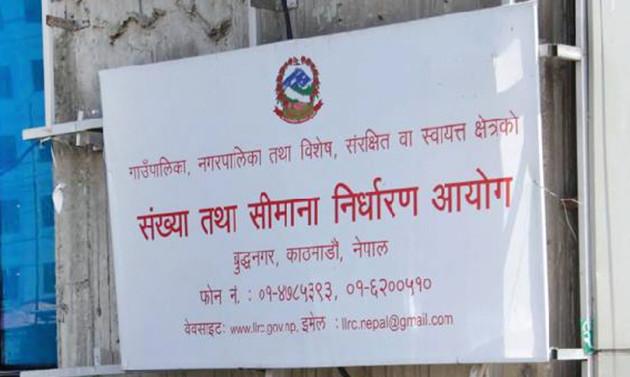Commission proposes maximum 744 local units
 Kathmandu / October 22 : Local Bodies Restructuring Commission today decided to create 744 local bodies at the most. This was stated in LBRC’s revised terms of reference and working procedures.
Kathmandu / October 22 : Local Bodies Restructuring Commission today decided to create 744 local bodies at the most. This was stated in LBRC’s revised terms of reference and working procedures.
The LBRC has determined the number of local bodies for the second time after the government revised its terms of reference and told it to treat ilakas (areas) as one of the major criteria for creating local bodies.
The LBRC had earlier created 565 local bodies, which some ruling and opposition parties opposed, saying the number should be higher to deliver services effectively. Madhesi parties say local bodies should be restructured only after revising provincial boundaries.
In its new terms of reference and work procedures, the LBRC said the minimum number of local bodies could be 507 and maximum could be 744.
LBRC said it would recommend minimum and maximum number of local bodies that could be created in particular districts on the basis of which district technical committees would recommend the appropriate number of local bodies after discussions.
The revised criteria would give 66 per cent local bodies to the mountain and hill districts (with 18 per cent share for mountain districts) and 34 per cent local bodies to the Tarai region.
As per the new criteria, sparsely populated districts will have at least three local bodies whereas densely populated districts will have up to 17 local bodies.
The LBRC has fixed the size of population for mountain, hill and Tarai districts. A village council of mountain districts should have at least 13,000 population as against 22,000 for hill districts. Village councils of hill areas of inner Madhes should have at least 22,000 population. Village councils of plains of inner Madhes and Tarai districts should have at least 40,000 population.
Similarly municipalities should have at least 17,000 population in the mountain districts, 31,000 in the hills and hill areas of inner Madhes and 60,000 in the plain areas of inner Madhes and Tarai districts.
LBRC member Sunil Ranjan Singh has opposed the LBRC’s criteria for restructuring local bodies.
Issuing a press release here today, Singh said he had registered his note of dissent at the LBRC on the new criteria.
He said he had demanded that population should be treated as the main basis for determining the boundaries of local bodies in the Tarai/Madhes, which the LBRC ignored while fixing the new criteria.
Singh said he opposed the new criteria because it did not apply the rules for hill districts, particularly in hill areas of the Chure range of Tarai districts.
Singh said he favoured different criteria for special, protected and autonomous areas because such areas could not be created on the bases of criteria applied to create local bodies. Singh said ilakas should not be a ground for creating local bodies.
